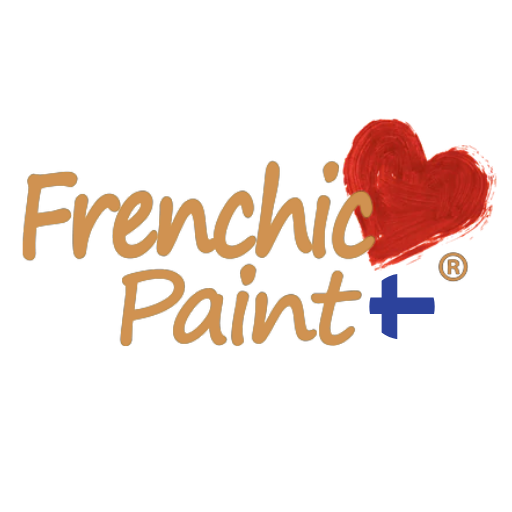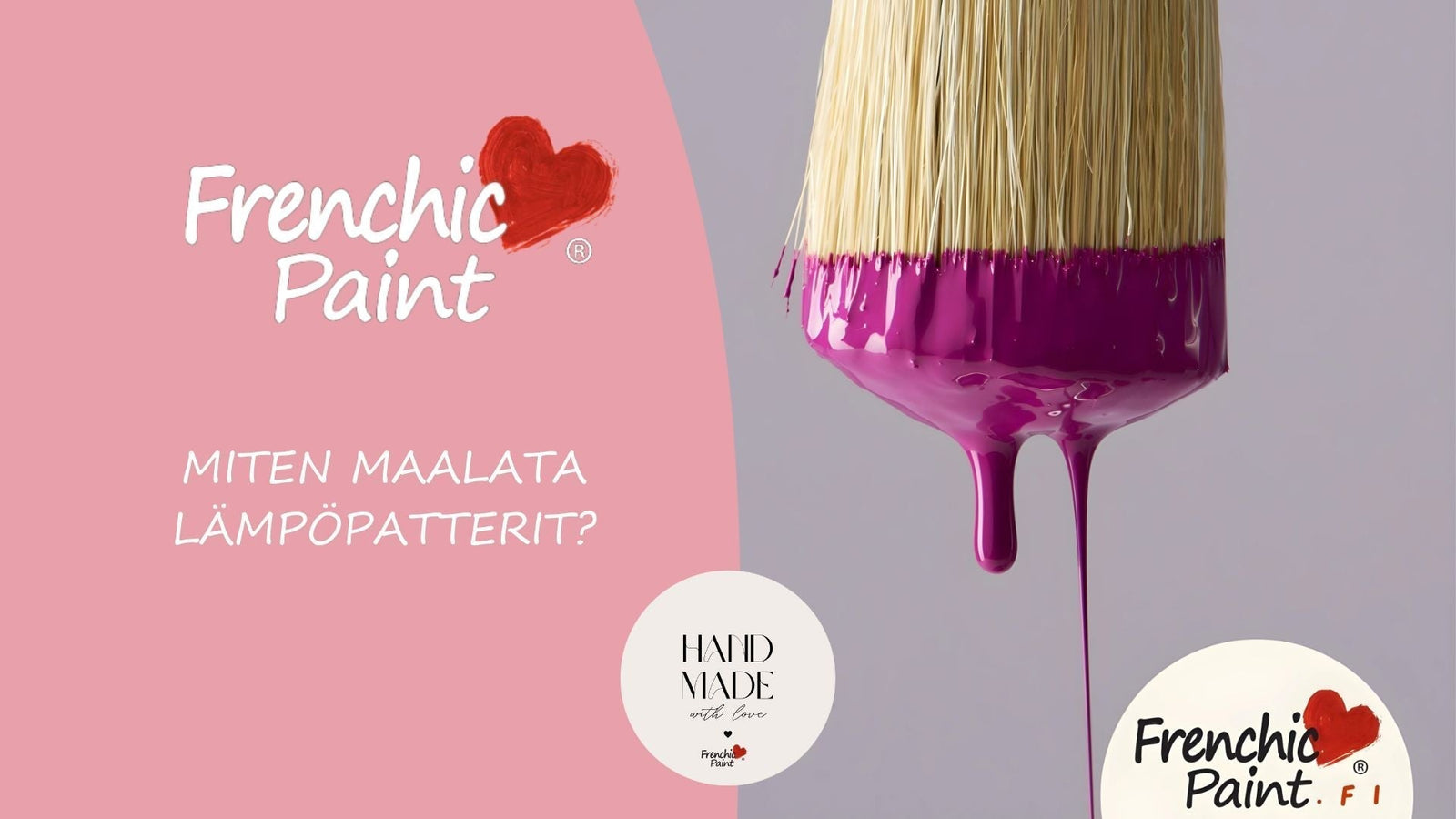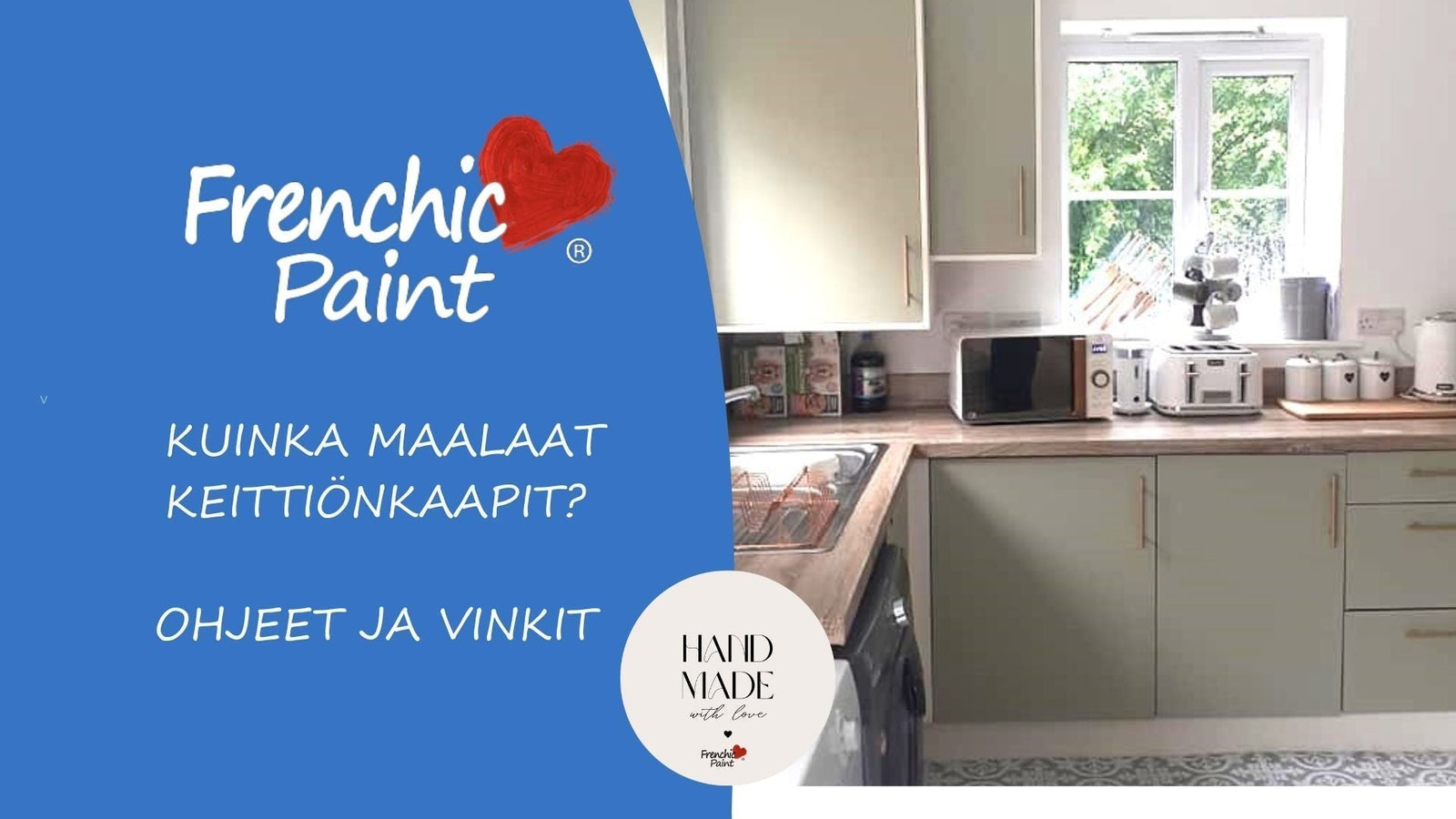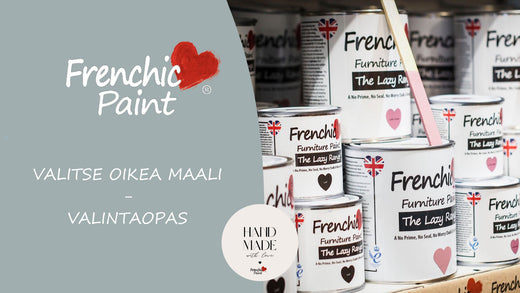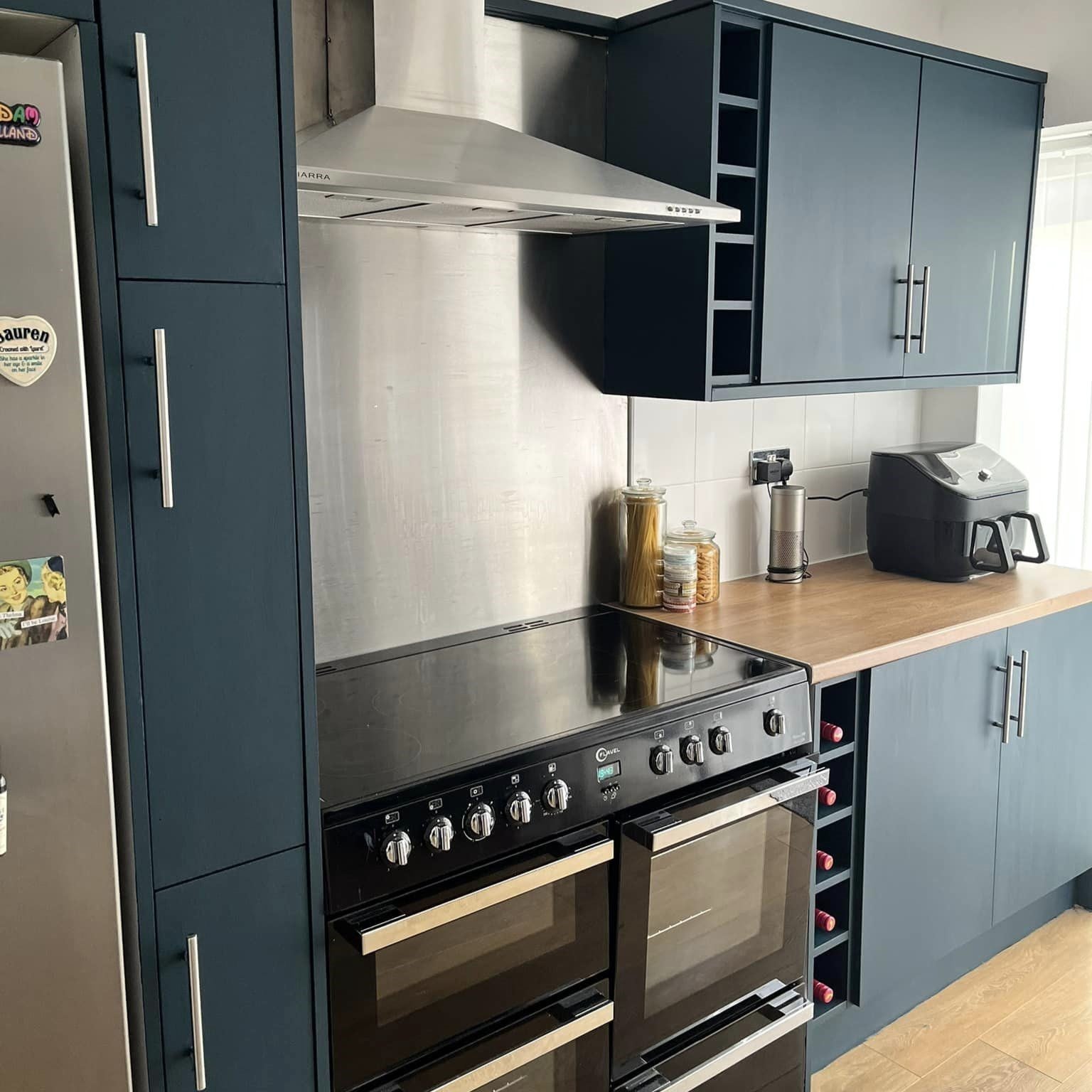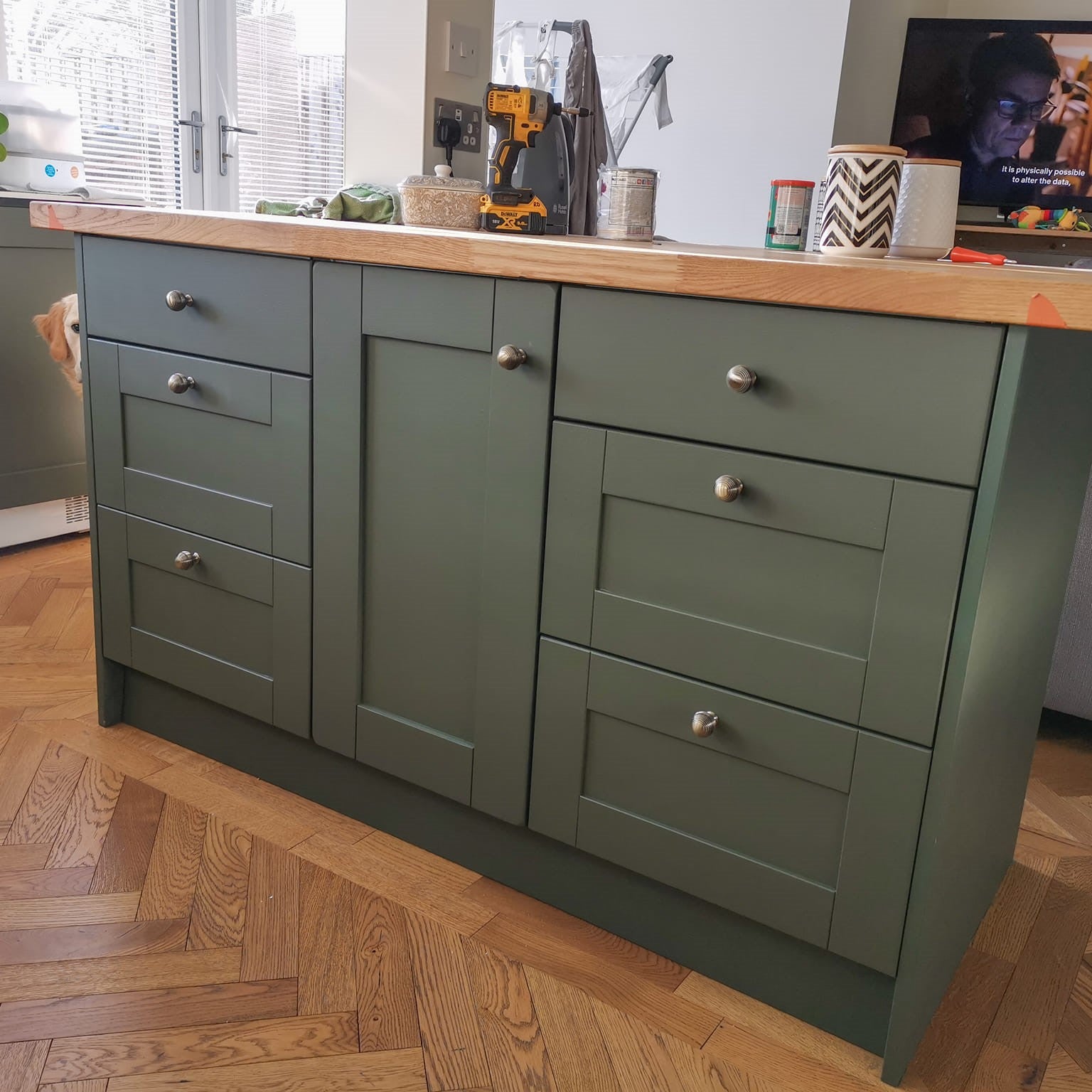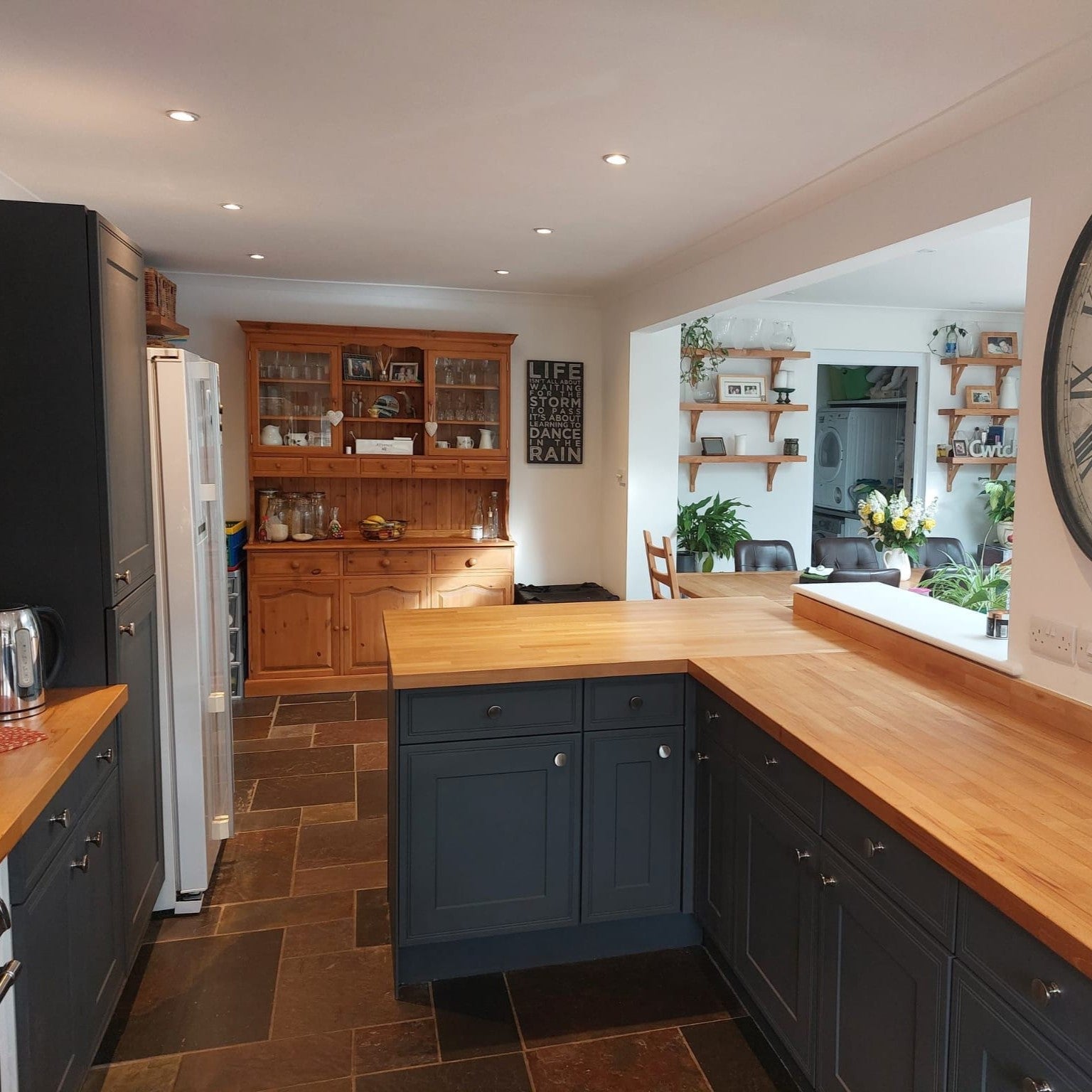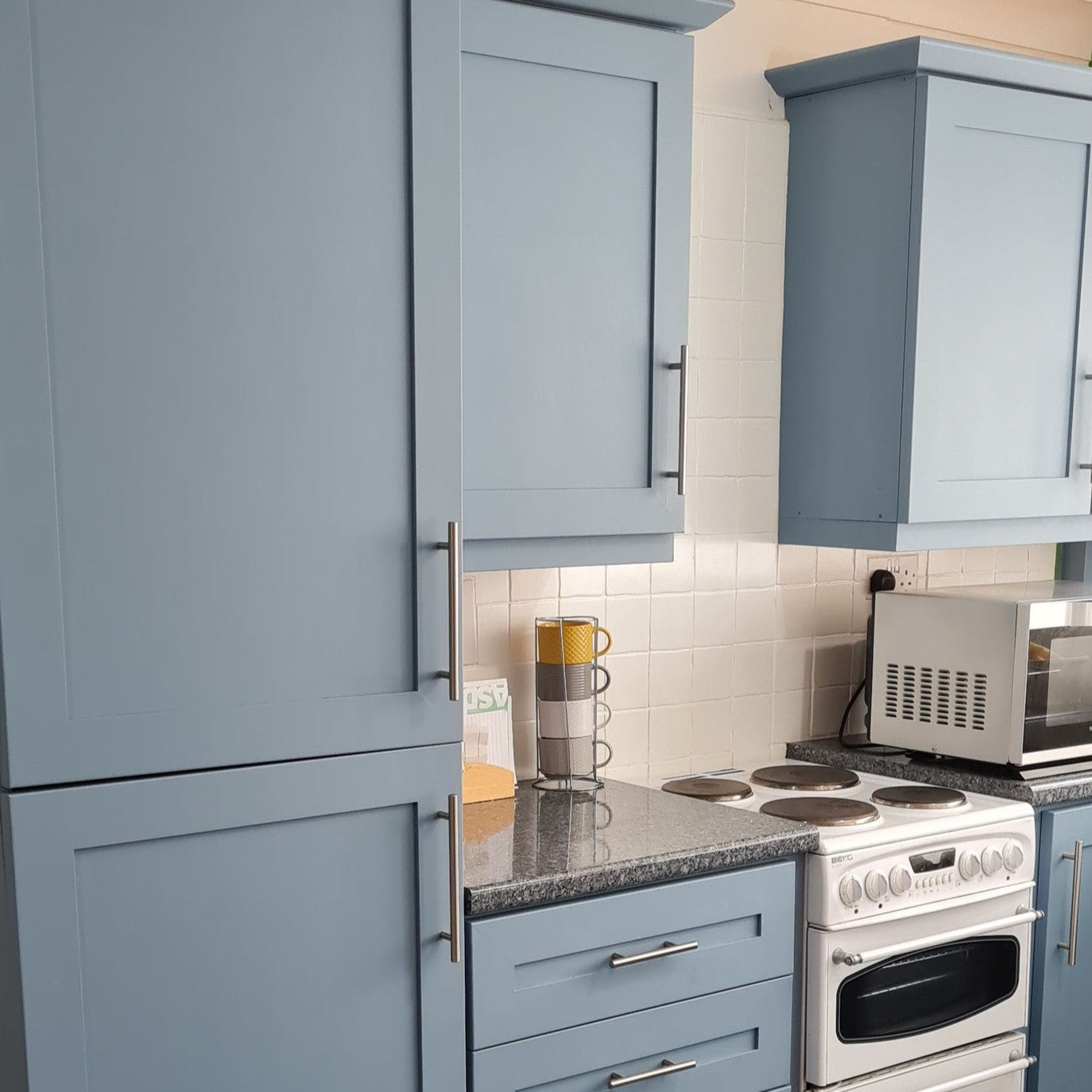Hur målar man element eller kakelugn?
Ett vattenburet värmeelement behöver inte längre vara gulnat och smutsigt vitt i ditt annars så vackra hem.
Att måla element är snabbt och enkelt. Och bäst av allt, det finns många valmöjligheter när det gäller vilken typ av färg och färg du väljer.
Läs här enkla och användbara målningsinstruktioner för målning av metallradiatorer.
Om du funderar på att måla någon annan uppvärmd yta, som till exempel en metallklädd kakelugn, läs instruktionerna till slutet.
Den gulningsfria Frenchic-färgen är det perfekta valet för målning av radiatorer. Den vattenbaserade Frenchic-färgen tål cirka 75-85 graders värme och du har fantastiska nyanser att välja mellan för att göra radiatorerna vackra och mer passande för din inredning igen.
Vilken färg ska jag välja för målning av en metallradiator?
Gamla radiatorer har ofta ursprungligen varit vita.
Beroende på färg kan färgen ha gulnat kraftigt med åren och är inte längre ren och fräsch. En gammal radiator framhävs alltid när andra ytor och hemmets rum förbättras – man skaffar nya möbler, tapetserar eller målar.
Som tur är har färgerna också utvecklats. Frenchic-serien erbjuder många fler alternativ för hur radiatorer kan behandlas i inredningen.
Det enklaste tillvägagångssättet är att använda en färg som inte kräver grundfärg och som ger en hållbar yta. Det måste också säkerställas att den valda färgen passar för metall och tål värme.
Att välja ett vattenbaserat färgsortiment med låg VOC-halt och låg lukt ger en behaglig applicering och är ett mer miljövänligt alternativ. Å andra sidan är kromade radiatorer och handdukstorkar vanligtvis inte lämpliga att måla.
Om dina radiatorer har pulverlackad yta eller tidigare målats kan du välja en ny nyans från dessa Frenchic-serier:
Trim Paint - halvblank
Al Fresco- matt
Frensheen - metallfärger
Frenshimmers - metallpatinafärger
Framhäv eller tona ner
Det är också värt att överväga om du vill måla rörsystemet. Matchande radiatorer och rör kan skapa ett mer enhetligt utseende.
Eller lägg till kontrast med olika färger. Som ovan är ett annat alternativ att förnya rörsystem med Frenchic metallfärger. En kopparfärgad radiator är ett fantastiskt inredningselement!
Om du målar bar metall, som kopparrör, och har valt Trim Paint -nyansen, behövs en lämplig metallgrund (andra Frenchic-serier behöver inte grundfärg).
Hur målar man element?
Nästa steg är målningprocessen.
Först är det bäst att stänga av elementet helt flera timmar innan målningen påbörjas så att ytan hinner svalna – helst redan dagen innan. Det är bäst att måla elementen utanför värmesäsongen.
1. Rengör, 2. rugga upp och 3. måla...
Innan målning, kom ihåg att rengöra elementen med Sugar Soap eller annat rengöringsmedel och behandla eventuella rostfläckar.
Tejpa och skydda termostaten och luftningsskruven. Du kan måla dem lätt efteråt med en liten pensel så att de fortfarande går att öppna/stänga.
Slipa lätt för att få bra vidhäftning för färgen och ta bort eventuell flagande färg. Torka sedan bort dammet och måla direkt enligt anvisningarna på färgburken. Följ lamellernas eller panelernas riktning, som vanligtvis är vertikal.
När du har målat det antal lager som behövs är det viktigt att inte slå på elementen igen. Låt färgen torka i lugn och ro i minst 48 timmar, så stäng av det målade elementet eller sätt inte på värmen. En för varm yta kan förstöra färgskiktet och störa torkningsprocessen, vilket påverkar hållbarheten.
Observera också att fukt kan påverka torkningsprocessen när man målar badrumselement. Om det finns fukt i luften måste du därför hålla området väl ventilerat i några dagar.
Vilken är den bästa färgen för element?
De tider då vitt var det enda alternativet för element är förbi. Denna traditionella färg har inneburit att elementen alltid har stått ut från vilken vägg som helst som inte är vit.
Det är därför elementskydd också har blivit det bästa alternativet för alla som vill att elementen ska smälta in bättre i inredningen.
Även om elementskydd kan se bra ut har de också nackdelar. De tenderar att minska luftflödet och värmeöverföringen, vilket försämrar elementens förmåga att värma upp rummet. De tar också plats och kan vara dyra jämfört med andra alternativ.
Här är några sätt att få elementen att fungera i ditt rum genom målning...
Smält nyansen med väggens färger
Du får ett sömlöst utseende genom att smälta samman elementen med vilken väggfärg som helst – kom ihåg att vitt inte längre är det enda alternativet!
Välj väggfärg från Chalk Paint-serien och elementfärg från Trim Paint-serien, båda i samma nyans, men med en liten skillnad i glansgrad, vilket ger en vacker, intressant och genomarbetad helhet.



På bilden visas rummet i vardagsrummet före och efter målning av elementet. Nyans: Moleskin, Trim Paint. Väggfärg: Stone in Love, Chalk Wall Paint
Kontrastfärger
Alternativt kan du göra elementet till en del av din inredning och skapa en tydlig kontrast som gör det framträdande.
Om du vill lägga till karaktär är en enkel trähylla ovanför hallens element praktisk – och den kan till och med öka elementets effektivitet.
Om du vill gå någonstans mitt emellan dessa två idéer kan du kombinera dem: ta elementets nyans från tapeten, mattan eller gardinerna. På bilden nyansen Smudge från Al Fresco-serien.

Bring the heat!
Med Frenchic kan du måla ditt element fritt på det sätt du vill, och du har flera olika färger och ytbehandlingar att välja mellan.
Du kan välja en mycket matt yta med Chalk Wall Paint-väggfärg, en mjuk satin med Trim Paint eller en slät matt yta med Al Fresco eller Lazy Range-nyans.
Nästa gång du målar väggar, måla även elementet, inte vitt, utan i samma nyans som väggfärgen, så blir slutresultatet snyggt och stilrent.
Elementet på bilden är målat med beige Salt of The Earth-nyans från Lazy Range-serien.


Håll dig till en enfärgad nyans eller var kreativ med metalliska toner.
Kolla gärna hur andra har målat element i vår Facebook-grupp!Oavsett ditt val njuter du av minimal förberedelse, högkvalitativ målningsbarhet och ett hållbart slutresultat!
Officiell rekommendation för målning av andra varma ytor.
Generellt tål alla vattenbaserade färger, som Frenchic-färger, ungefär 85 graders värme.
Om du funderar på att måla någon annan varm yta, som till exempel en metallklädd pönttöugn, mät temperaturen på ytan innan du börjar måla.
Det beror alltså på vem som värmer ugnen hur varm ytan blir – det kan du mäta själv med en termometer.
På Facebook-gruppen finns bilder och erfarenheter från våra kunders målade ugnar.
Målningsinstruktioner kortfattat: planera målningen utanför uppvärmningssäsongen, varm yta bör inte/måste inte målas.
Värm ytan vid målning, färgen torkar alldeles för snabbt och påverkar många saker: vidhäftning, hållbarhet och utseende: färgytan kan spricka när den torkar för snabbt.
Frenchic-färgernas självutjämning kan inte ske om du målar på en varm yta – då kan penseldragen från den snabbt torkande färgen synas i slutresultatet.
Mynningen är säkert den hetaste och smutsigaste platsen, så var noggrann med rengöringen. Om mynningen glappar och inte sluter tätt, bränns och sotar den nya färgytan snabbt igen.
Efter målning, låt färgen torka i lugn och ro och börja värma tidigast efter 48 timmar, försiktigt.

